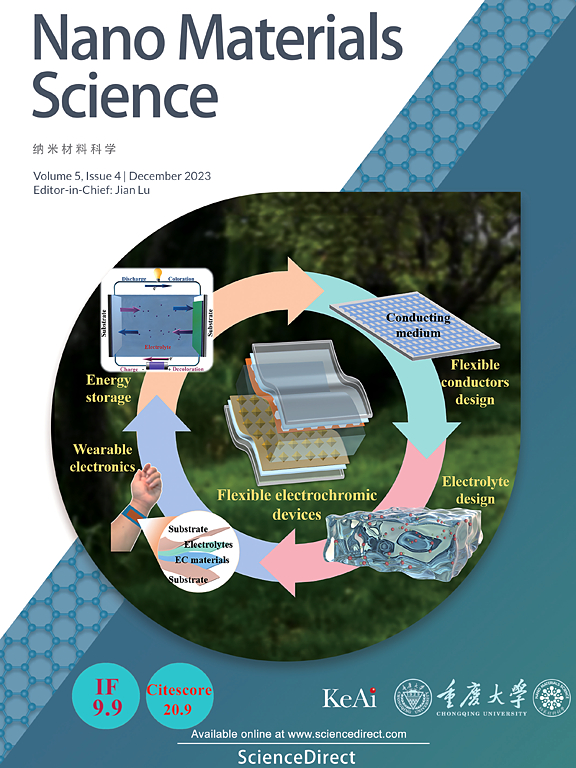间隔阳离子中的官能团对基于 PEA 的二维单层卤化物包晶特性的影响
IF 17.9
2区 材料科学
Q1 Engineering
引用次数: 0
摘要
采用低维化技术可以有效地解决混合卤化物包晶石长期稳定性不足的难题,但其宽带隙和强量子阱约束仍然是各种光电应用的巨大障碍。在不影响长期稳定性的前提下解决这些问题已成为材料科学领域的一个重要焦点,特别是探索间隔阳离子内官能团的影响。我们的模拟揭示了 PEA 强大的 π-π 堆叠相互作用以及 PEA 和 MX 之间强大的氢键相互作用有助于缩小二维单层 PEAMX 的电子带隙(例如二维单层 PEASnI:1.34 eV),从而实现合理的可见光吸收,同时确保其良好的长期稳定性。此外,由于共轭苯环的存在,PEA 中的分散轨道和相对较高的介电常数被观察到可以削弱二维单层 PEAMX 中的势垒、激子结合效应和量子阱约束,从而促进光生电子-空穴分离和平面外载流子传输。间隔阳离子对二维单层包晶的光电和传输特性的影响凸显了精心选择和设计的间隔阳离子(尤其是官能团)在塑造其光物理性质和确保其在极端工作条件下的长期稳定性方面的关键作用。本文章由计算机程序翻译,如有差异,请以英文原文为准。
Impact of functional groups in spacer cations on the properties of PEA-based 2D monolayer halide perovskites
Incorporating low-dimensionalization technologies effectively tackle the challenge of inadequate long-term stability in hybrid halide perovskites, however their wide bandgap and strong quantum well confinement remain substantial obstacle for various optoelectronic applications. Addressing these issues without compromising long-term stability has emerged as a pivotal focus in materials science, in particular exploring the effects of the functional groups within spacer cations. Our simulations reveal that the robust π-π stacking interactions involving PEA+ and the strong hydrogen bonding interactions between PEA+ and MX64− contribute to narrowing the electronic bandgap in 2D monolayer PEA2MX4 (e. g. 2D monolayer PEA2SnI4: 1.34 eV) for reasonable visible-light absorption while simultaneously ensuring their favorable long-term stability. Moreover, the delocalized orbitals and relatively high dielectric constants in PEA+, attributed to the conjugated benzene ring, has been observed to weaken the potential barrier, exciton binding effect and quantum well confinement in 2D monolayer PEA2MX4, thus facilitating photogenerated electron-hole separations and out-of-plane carrier transport. The impact of spacer cations on the optoelectronic and transport properties of 2D monolayer perovskites highlights the critical role of meticulously chosen and well-designed spacer cations, especially functional groups, in shaping their photophysical properties and ensuring long-term stability even under extremely operating conditions.
求助全文
通过发布文献求助,成功后即可免费获取论文全文。
去求助
来源期刊

Nano Materials Science
Engineering-Mechanics of Materials
CiteScore
20.90
自引率
3.00%
发文量
294
审稿时长
9 weeks
期刊介绍:
Nano Materials Science (NMS) is an international and interdisciplinary, open access, scholarly journal. NMS publishes peer-reviewed original articles and reviews on nanoscale material science and nanometer devices, with topics encompassing preparation and processing; high-throughput characterization; material performance evaluation and application of material characteristics such as the microstructure and properties of one-dimensional, two-dimensional, and three-dimensional nanostructured and nanofunctional materials; design, preparation, and processing techniques; and performance evaluation technology and nanometer device applications.
 求助内容:
求助内容: 应助结果提醒方式:
应助结果提醒方式:


